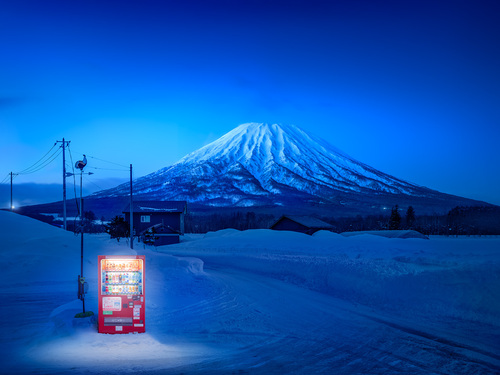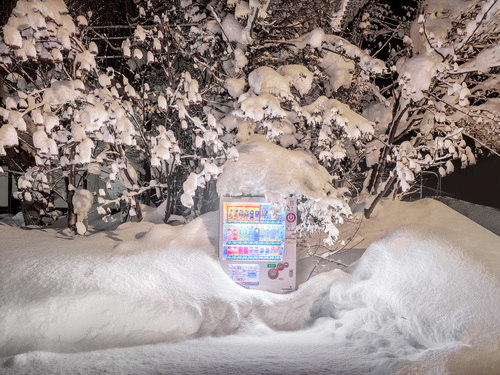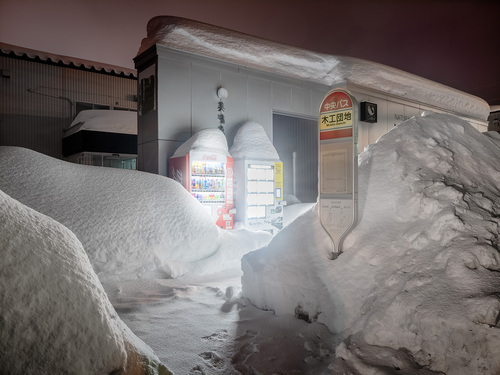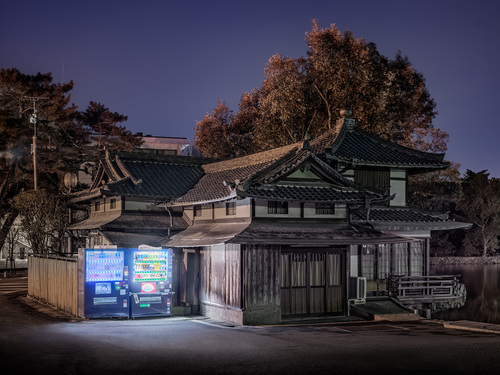Roadside Lights ⅵ
Photographing as the snow falls and piles up around me brings back old memories. I remember playing outside until my boots were filled with snow, and how difficult it was to take them off once I went back inside. Or digging into snowbanks to create secret hideouts for myself. While my childhood memories of the snow are rather sweet, life in winter in the northernmost part of Japan where I grew up was harsh. Sometimes the blizzards were so strong it was impossible to put one foot in front of the other, almost as if the full force of nature was blowing against me.
Winter was always a reminder of how small and feeble human existence really is. But I also remember the nightly scenes, when the snow reflected the light off the street lamps, beautifully and brightly. For me, the sight of a vending machine on a snowy night embodies these memories. Shining along the road, surrounded by snow, they take on meanings beyond their functionality: they become symbols of Japan’s safety, or the personification of the modern worker. It is sometimes said that Japan’s ubiquitous vending machines are an unthinkable sight in the West. I think they may hint at a certain part of the collective subconscious that underlies Japanese society – the belief in working for the benefit of others, even if it may go unnoticed. In this case, the vending machines act as a model for us humans. They become partners and reflect the trust we place in the goodness of others. Perhaps this sensibility is indeed the result of a characteristically Japanese worldview, and less common in the Western hemisphere, which has long been shaped by the belief in an absolute God. The difference in the relationship between humans and machines can be seen more clearly in art and popular culture. For example, in the German film Metropolis1 (1927) and the Japanese manga Astro Boy (1952–68). In Metropolis, the robots (machines) stand opposition to humans; in Astro Boy, they are humankind’s friends.
Language may also be a factor. In English, the verb is usually placed near the beginning of a sentence. The main point is outlined first, and then elaborated upon. In Japanese, the verb comes at the end of the sentence and is usually preceded by situational explanations and vague background information. The ambiguity of the Japanese language leaves space (“ma”) for the listener to think, and the linguistic structure and order make it easier to regard a vending machine not merely as a separate entity, but as an object layered with the scenery, atmosphere, and feelings that surround it. The Japanese philosopher Kitaro Nishida wrote about this sensibility as the “non-distinction between subject and object,” an aspect of Japanese culture that predisposes it not to draw clear lines between self and external world. Subject, object, and the surrounding environment can be experienced as one.
I think there is much to be discovered in these landscapes. As long as they connect with the viewer, individual memories and experiences will give rise to new and deeper layers of meaning. In this sense, I hope they continue to resonate with audiences around the world.







